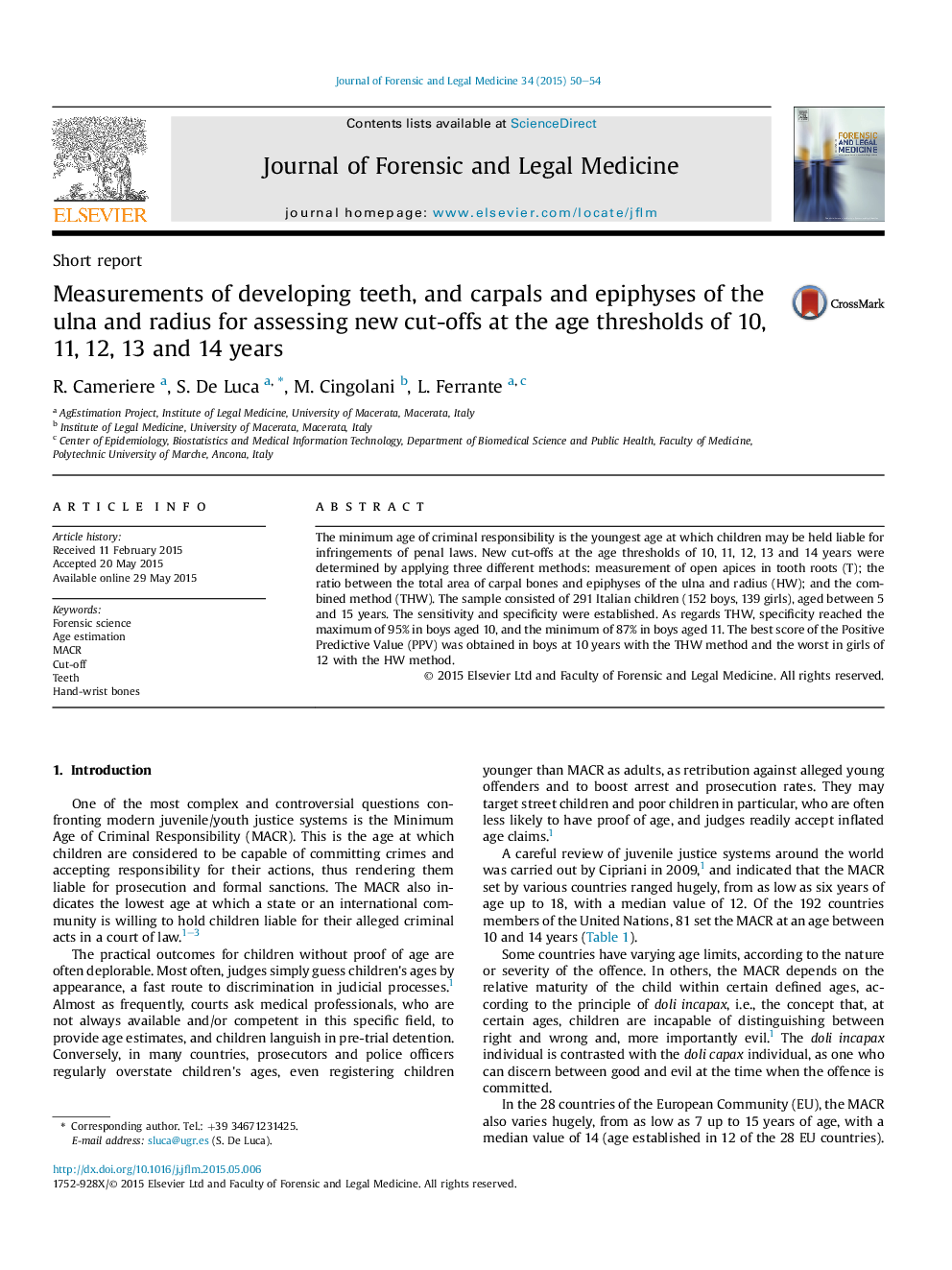| کد مقاله | کد نشریه | سال انتشار | مقاله انگلیسی | نسخه تمام متن |
|---|---|---|---|---|
| 101877 | 161298 | 2015 | 5 صفحه PDF | دانلود رایگان |
• X-rays of hand-wrist bones and orthopantomograms (OPGs) were analysed.
• Three techniques were applied to assess new cut-offs at the age thresholds of 10, 11, 12, 13 and 14 years.
• Sensitivities and specificities were calculated for each technique.
• The sensitivity and specificity values were quite high for all the methods.
• HW showed the lowest accuracy.
The minimum age of criminal responsibility is the youngest age at which children may be held liable for infringements of penal laws. New cut-offs at the age thresholds of 10, 11, 12, 13 and 14 years were determined by applying three different methods: measurement of open apices in tooth roots (T); the ratio between the total area of carpal bones and epiphyses of the ulna and radius (HW); and the combined method (THW). The sample consisted of 291 Italian children (152 boys, 139 girls), aged between 5 and 15 years. The sensitivity and specificity were established. As regards THW, specificity reached the maximum of 95% in boys aged 10, and the minimum of 87% in boys aged 11. The best score of the Positive Predictive Value (PPV) was obtained in boys at 10 years with the THW method and the worst in girls of 12 with the HW method.
Journal: Journal of Forensic and Legal Medicine - Volume 34, August 2015, Pages 50–54
